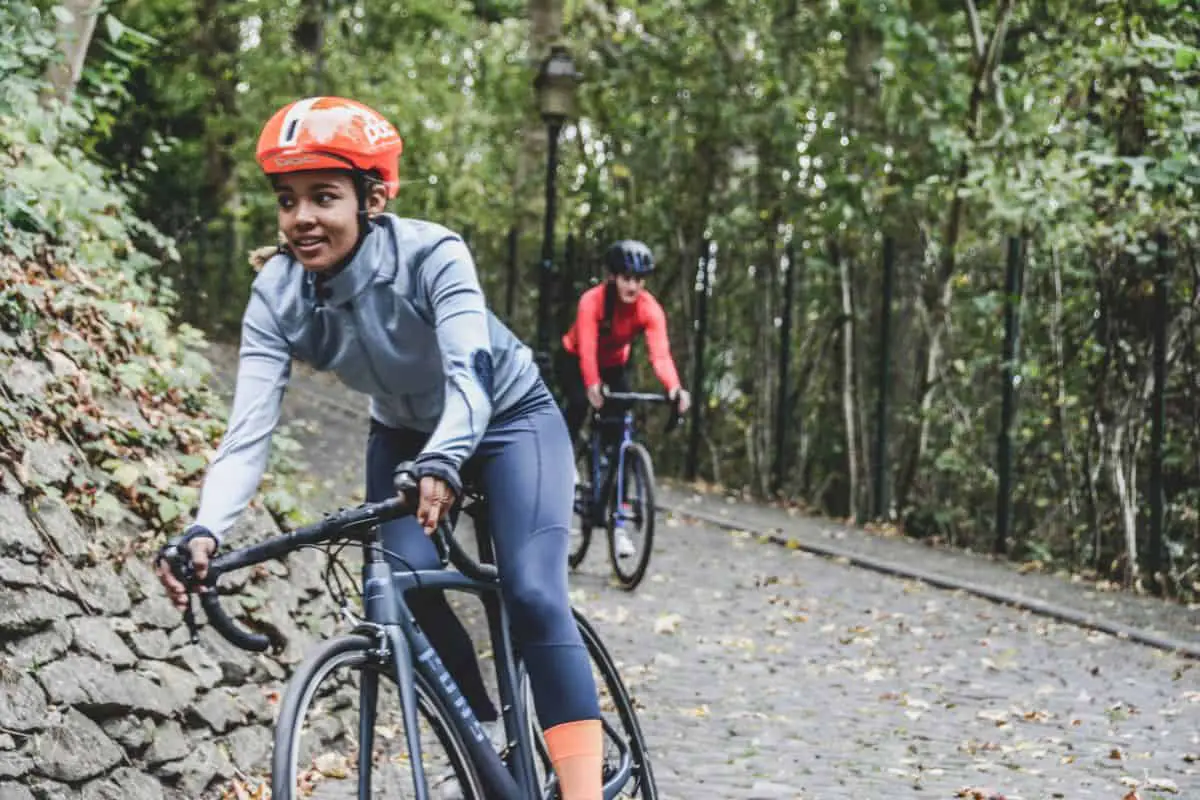So you’re just warming up to the idea of city biking and you’re not sure where to start. Well, this article is the place to start.
The common wisdom amongst seasoned bike commuters is to just “use whatever bike you have.” But if you’re looking to buy a bike or just want the best possible city riding experience, then this article will help you make a clear decision.
I’m going to take you on a journey to figure out the best type of bike for your situation, based on my personal experience of bike commuting in New York City for many years and also from some fellow cyclists in the biking community.
The recommended type of bike for city riding is a hybrid bike for riders that want to ride comfortably and efficiently due to the upright riding position and lightweight frame. For riders that value speed and efficiency, a road bike is the best option due to its aerodynamic riding position and lightweight frame.
Below I’ll explain exactly why each bike type is recommended for different situations, and why I don’t recommend using a mountain bike!
| BIKE TYPE | BEST FOR | BENEFITS |
| Hybrid bike | Comfort and efficient riding | – Comfortable riding position – Lightweight |
| Road bike | Speed, power, and efficient riding | – Optimal for power and speed – Lightweight |
| Folding bike | Compact storage and public transit | – Compact folding design |
| Bike-sharing system | Infrequent riding and no maintenance | – Affordable – No maintenance |
| Mountain bike | Off-road riding | – Optimal for off-road riding |
What cyclists say is the best bike type for city riding
We asked the cycling community what the best type of bike for commuting is, and here are some of their responses:



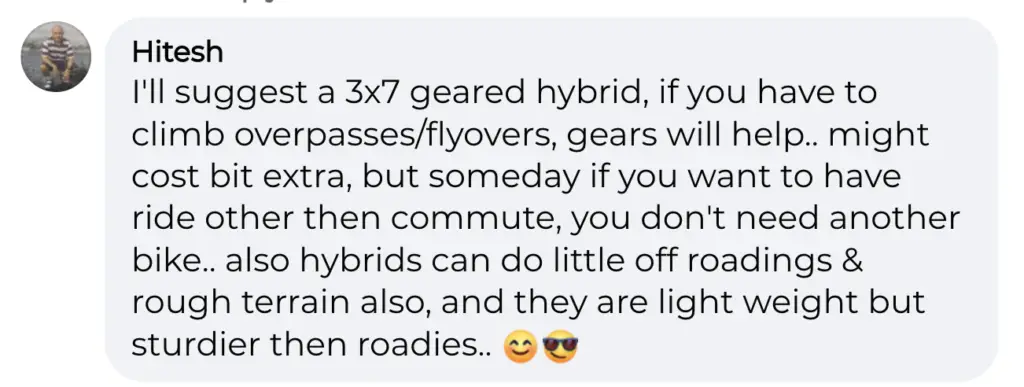


Overall, the consensus is that hybrid bikes are a very safe option when choosing a bike for city riding.
However, there is a strong case to be made for road bikes as an even better option, which we’ll get into in a later section.
Hybrid bikes are best for comfort and efficiency
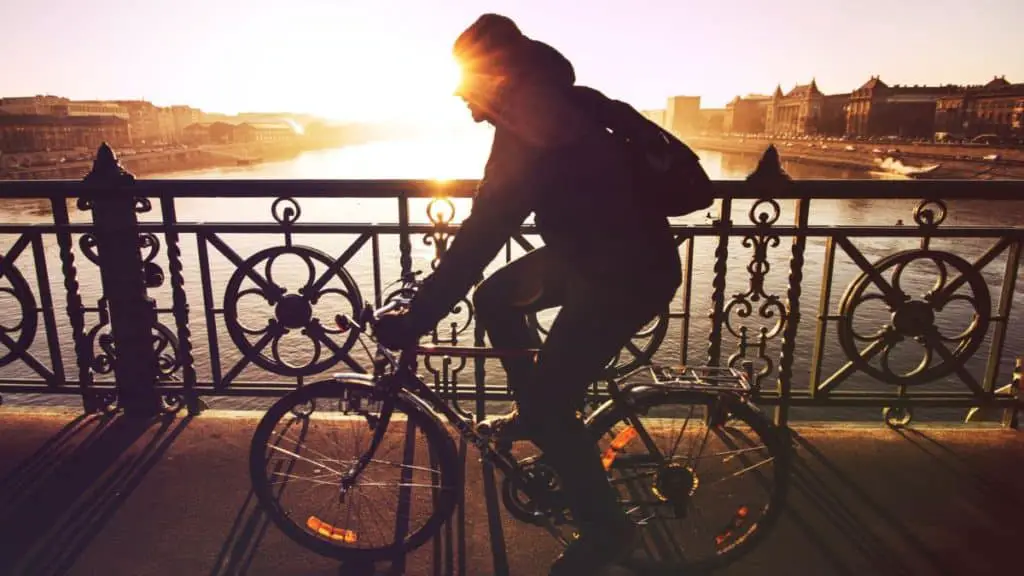
A hybrid bike is the overall best recommendation for city cyclists that want to be comfortable and efficient with their riding.
Hybrid bikes were originally designed to take the best of both road bikes and mountain bikes. The hybrid bike takes after the road bike’s lightweight frame and thinner tires. In addition, the hybrid bike takes after the mountain bike’s upright riding position for comfort and traditional flat bar handlebars.
If the road bike’s drop-style handlebars and aggressive riding position don’t appeal to you, then you should definitely consider a hybrid bike. It takes the best of all bike types into one.
However, if you really want to prioritize getting stronger, faster, and fitter through cycling, then a road bike is still a better option than a hybrid bike.
Road bikes are ideal for increasing strength and speed due to their riding position and aerodynamics. So if that sounds like fun to you, then I’d recommend a road bike. The riding position of the road bike might feel a bit different at first, but you will get used to it after just a few rides.
On the other hand, if you’re okay with just riding at a leisurely pace and you’re not excited by speed and fitness gains, then a hybrid bike is a solid choice.
If you’re looking for a recommended hybrid bike, I personally would go with a simple Schwinn bike. Schwinn is a well-known and affordable brand that I’ve been using for years without any trouble. For the prices of their bikes, the quality is actually pretty great. Here’s a good option available on Amazon.
Road bikes are best for speed and efficiency
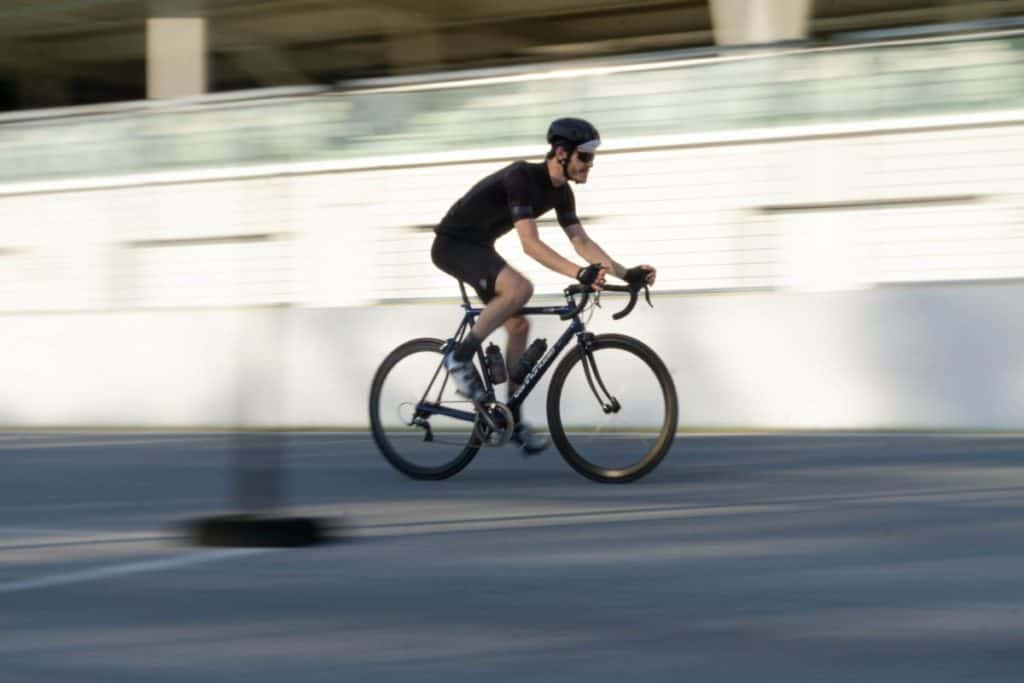
If you’re excited by the idea of getting faster, stronger, and improving your time to get to work on your bike, then a road bike is your best option.
Anyone that is serious about improving fitness, speed, and getting to their destination fast should absolutely go with a road bike for city riding.
There are several very good reasons to use a road bike for commuting:
1. Road bikes are faster than other bikes
Road bikes offer a more aerodynamic seating position that is not found on any other bikes. Due to the lower handlebar and higher seat, the bike frame puts the rider in a more forward-leaning position that is optimal to slice through the wind and increase speed.
Not only is the riding position more aerodynamic, but the bike frame itself is often designed for speed, with lightweight materials and an aero design.
The aggressive riding position is often what scares people from choosing a road bike. However, road bikes are not more dangerous than other types of bikes. It’s just the fact that they are different is what often steers people away from them.
Luckily, with just a few rides on a road bike, you’ll be feeling more comfortable than ever on a bike. If you feel the handlebar is too low for your comfort, you can actually adjust it to your liking to make it more comfortable (more on this below).
2. Road bikes are comfortable (if done right)
If you’re concerned about how uncomfortable road bikes look, fret not! Road bikes can be made very comfortable with a correctly adjusted bike and a pair of cycling shorts.
Adjust the handlebar height
Sometimes riders complain about the more forward-leaning riding position on road bikes. This is position is designed to be aerodynamic and decrease wind resistance. The drawback is that some riders will feel uncomfortable at the beginning.
The easiest way to make the riding position more comfortable is to raise the handlebar by adding spacers to the top of the steerer tube.
This video shows exactly how to make your road bike position more manageable.
Wear padded cycling shorts
The next best thing you can do to make your road bike more comfortable is to wear some cycling-specific padded shorts. Road bikes can be uncomfortable for your rear end if you don’t have the right gear and setup, but you don’t need any fancy cycling clothes!
The real benefit of cycling shorts is the padding (chamois) on the bum. If your ride is long (more than 10 miles), then you will want to get a pair of cycling shorts. For shorter rides, normal shorts will do just fine.
The added benefit of cycling shorts is that they are breathable and they are aerodynamic (due to the tight fit).
(Don’t wear underwear under these shorts!)
I strongly recommend getting bib shorts, as opposed to waist shorts. If you’re new to bib shorts, then you might be wondering if those are necessary. In addition to the padding and sweat-wicking that regular cycling shorts have, bib shorts have the added benefit of the bib straps. The main benefit of bibs is that they cover your entire torso and backside without being tight around your waist.
Especially if you have some fat around the waist, you will definitely want to get some bibs, as opposed to tights that squeeze your belly. 😉
You can get this solid pair of bibs for just around $40 on Amazon.
Here’s an option for the ladies:
3. Road bikes allow for increased fitness over time
Another great benefit of road bikes that is often appealing to bike commuters is the idea of getting stronger and more fit over time. With a road bike, the riding position allows for more power to transfer through the legs into the pedals. And with increased power comes increased fitness over time. This means that essentially road bikes can make you more fit than any other bike could because of the added power transfer that you are able to put into each pedal stroke. This is because the aerodynamic frame style gives the rider a more aggressive riding position for more power transfer. Have you ever watched Olympic cycling spriters? There’s a reason they all have enormous legs and are also using road bikes.
Bike-sharing systems are best for infrequent riding
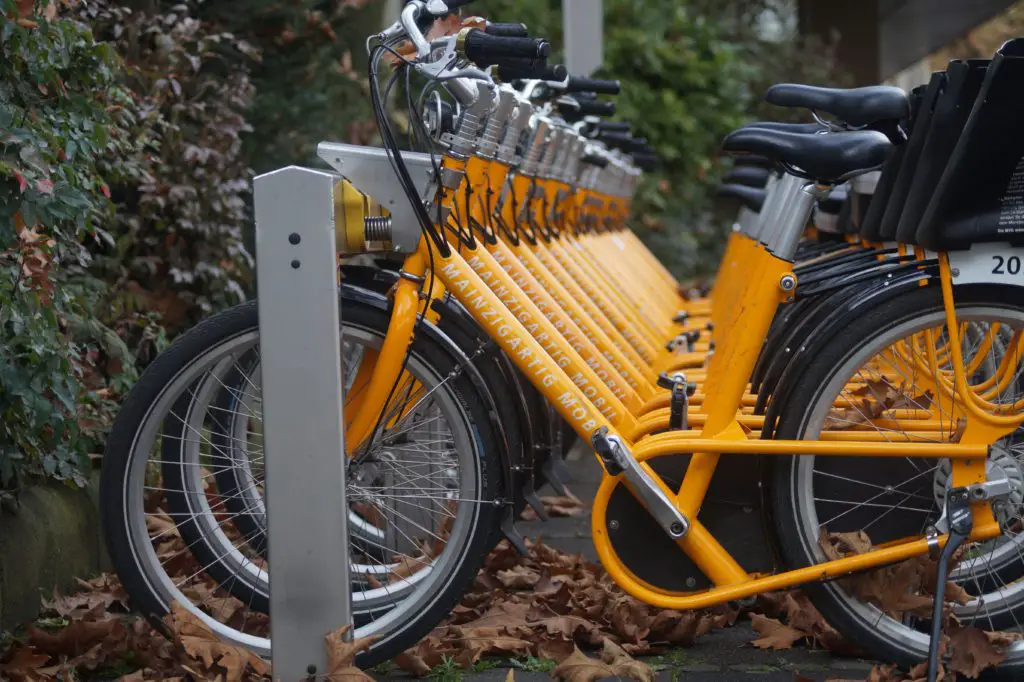
Bike-sharing systems are ideal for riders that prefer not to do their own maintenance or ride infrequently, such as once or twice per week. The cost of using a bike-sharing system is affordable at just around $3.50 for 30 minutes or $15 per month in some cities.
The benefit of bike-sharing systems can outweigh the cons for many people.
Bike-sharing pros
- Simple pricing at just around $3.50 for 30 minutes or $15/month in some cities
- Large network of bikes across the entire city
- Hassle-free maintenance
Bike-sharing cons
- Lack of bike ownership
- Potentially no bikes available during warm season
- Lack of bike options
If you’re an infrequent rider and don’t want to handle your own bike maintenance, then bike sharing is a great option for you. But if you like the idea of getting your hands dirty and owning your bike, then either a hybrid or road bike are the best options for city biking.
Folding bikes are best for public transportation
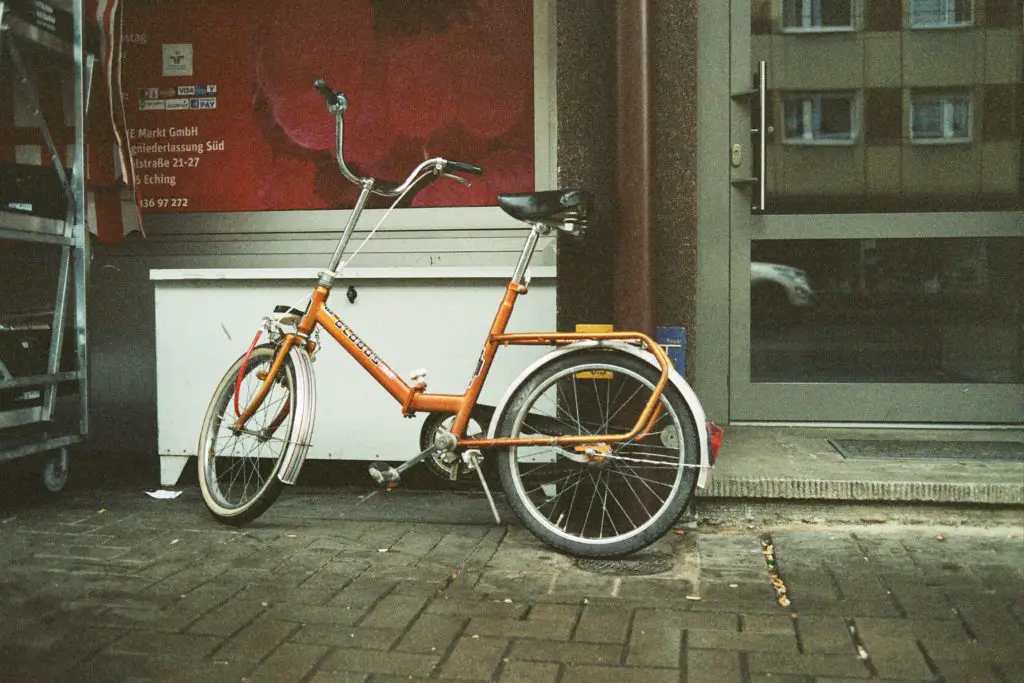
Folding bikes are ideal for rider that plan to take their bike on public transportation, such as a train, bus, or taxi. They are also useful for storing in small spaces, such as in a closet or under the desk at the office.
However, since folding bikes are not the most efficient bike for getting around, I recommend only using one if you need to ride on public transportation or store in a small space.
Folding bike pros
- Compact folding to bring on public transportation
- Easy to store in the office
Folding bike cons
- Inefficient riding due to small wheels
- Can be expensive
I wrote an entire article on how to ride efficiently with a folding bike. Check it out here.
Mountain bikes are NOT recommended for bike commuting
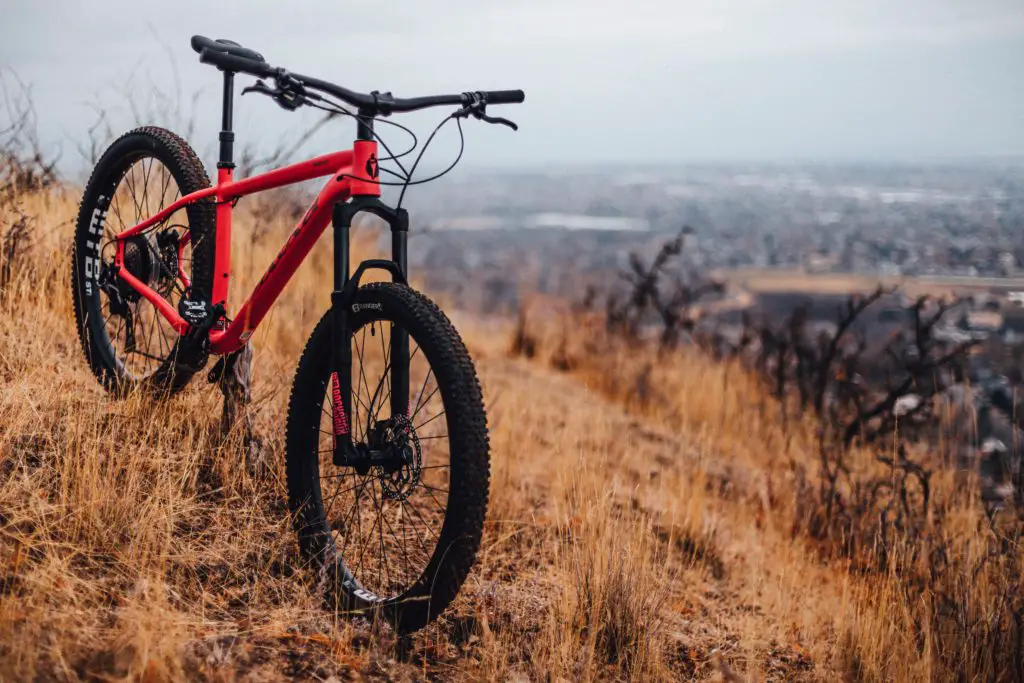
Unless you will be specifically riding off-road trails during your bike commute, mountain bikes are not recommended for bike commuting. Many riders do prefer to commute with mountain bikes because they are comfortable, but the wide tires, suspension, and heavy frame make riding on paved roads very inefficient compared to road bikes.
Mountain bikes are designed for the mountains, which means they are not ideal for riding on paved roads. In comparison to road bikes, mountain bikes have wider tires with lower air pressure. As a result, the rolling resistance on mountain bikes becomes less efficient on paved roads. This makes riding even harder and less efficient when pulling a bike trailer.
Lights are a must for city riding
Visibility goes way down when riding in the city, which is why lights are essential. In fact, many cities require lights by law in the evenings. Having flashing front and rear lights on your bike dramatically increases your chances of being seen while riding. If you can get this right, then you will not have to worry about not being seen. It’s best to keep front and rear lights on ALL YEAR for optimal visibility.
Even when riding during a sunny day, it’s important to have flashing lights at the front and back of your bike to make sure that cars and other cyclists see you. This is especially important if you are riding in a city with lots of cars and pedestrians.
Recommended front light
A good front light has different options to either flash or stay on. When riding in the day or early evening, use the flashing function. When it’s completely dark, just keep the light on without flashing.
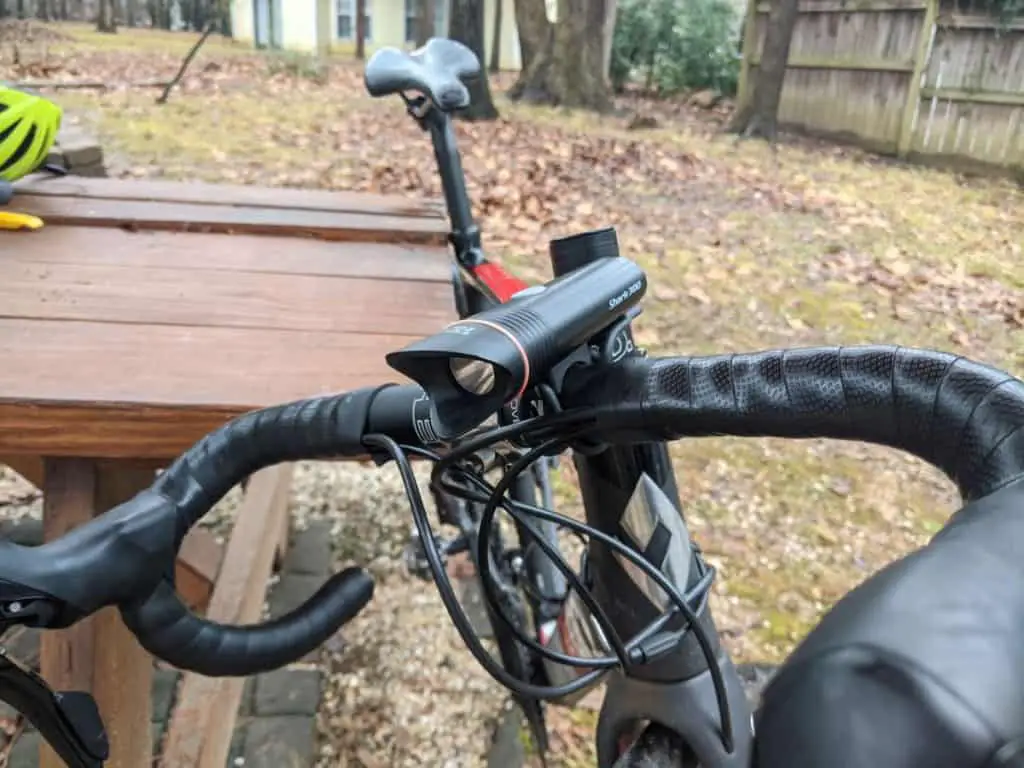
You will also want to make sure that your front light can be charged by USB, rather than powered by disposable batteries. You should be charging your lights at the end of every day, so USB charger is the way to go.
I have been using this front light from Cycle Torch for many years without any issues. It’s super bright and has multiple flash frequency settings.
Recommended rear light
The rear light should also have different flash options. You will definitely want to keep your rear lights on all the time, night or day. A good rear light will be powered by a USB-chargeable battery, rather than disposable batteries.
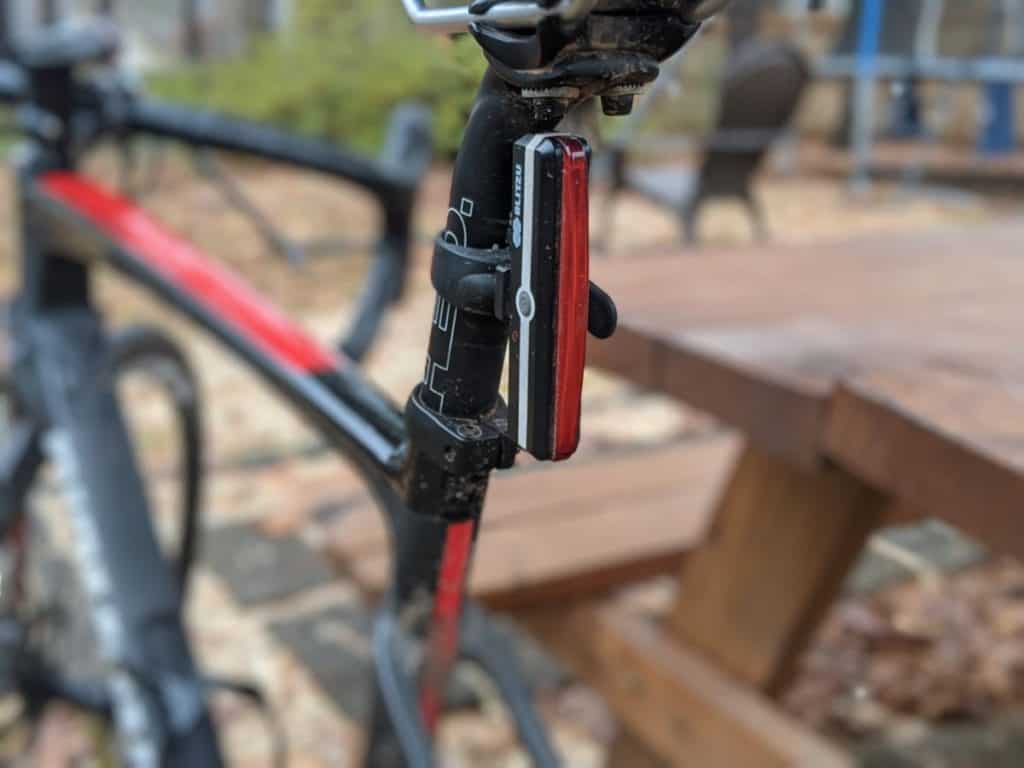
This rear light by Blitzu has never let me down through dark winters and freezing rain. It has different flash options, such as a rapid flash or a steady flash. It is also rather bright. Not dim at all for more than four years of constant use.
Disc brakes are ideal for city riding
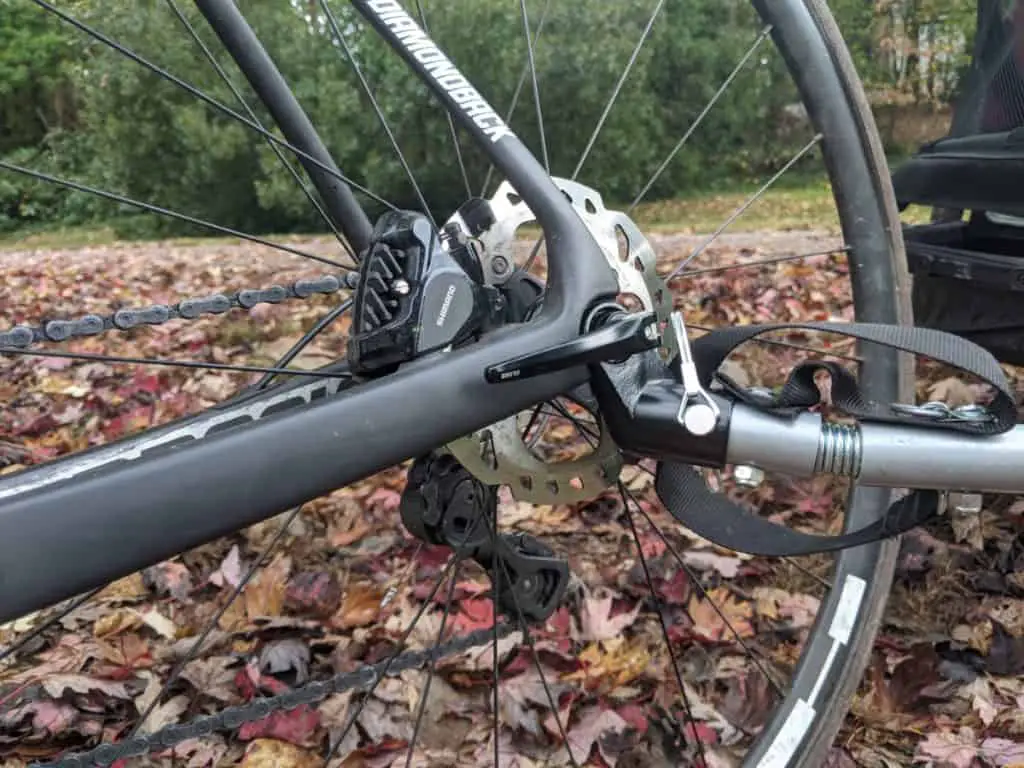
If you plan on doing year-round bike commuting in all kinds of weather, then getting a bike with disc brakes is highly recommended. Disc brakes are more efficient in braking than traditional rim brakes when riding in rain or snow. They also don’t wear down as quickly as rim brakes, so you won’t have to worry about changing them as often.
Many modern road bikes and even hybrid bikes come with disc brakes, so you’ll be in luck to find a bike that has them. But if you don’t have the luxury of disc brake options, then sticking with rim brakes will be just fine as well. There are millions of people that get around just fine with good ol’ rim brakes.
Even a simple road bike from Amazon nowadays comes with disc brakes (like this one), so it shouldn’t be hard to find one.
Here’s a helpful video on the benefits of disc brakes vs traditional rim brakes.
Are cycling clothes worth it?
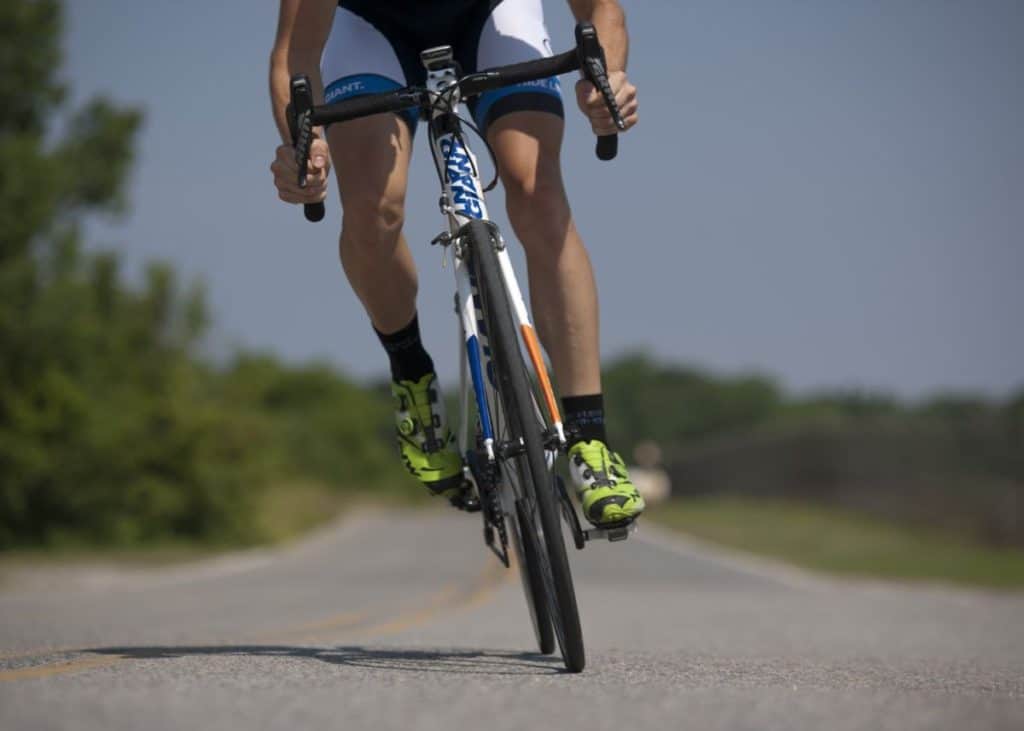
On the topic of comfort and aerodynamics, are cycling clothes even worth the trouble? You will naturally associate road bikes with tight-fitting lycra, but is it all necessary?
If you will be doing moderate to intense cycling for distances longer than 10 miles, then a cycling jersey and shorts are highly recommended. Cycling shorts offer aerodynamic fitting, sweat-wicking, and padding to prevent saddle soreness and chaffing. Cycling jerseys offer better aerodynamics, seat-wicking, and back pockets for your necessities.
The good news is that cycling clothes don’t have to be that expensive. As a frugal cyclist, I would only recommend doing something if it will make your life better. And cycling clothes do just that. They are breathable, maintain a good smell, and jerseys even have cool little pockets in the back for your phone and things!
Spending the extra $70 on some basic cycling clothes is worth the money for anyone planning on cycling a few times per week or distances over 10 miles. After 10 miles, you may start to experience soreness in your rear end, which can be prevented with cycling shorts.
Wider tires add comfort to the ride

Another aspect of road bikes that typically makes them uncomfortable is the skinny tires. Many road bikes come with either 23mm or 25mm tires. Those tire widths are generally uncomfortable and bumpy for beginners, especially in city riding.
If you are riding in a city, I don’t recommend 23mm or 25mm tires because you will feel every crack and hole in the road. Instead, a more comfortable option for a road bike would be 28mm or wider. Keep in mind that some road bikes don’t have room for wider than 25mm tires, so you will have to check with the manufacturer.
If you are unable to get wider tires than 25mm, then it is recommended to deflate the tires slightly to allow for a less bumpy ride.
A really solid option for tires for bike commuting is GatorSkins by Continental tires. They are designed to be thick and withstand anything that the road throws at them, which is ideal for city riding. I personally use these tires and have never once had a puncture, even while commuting daily to NYC from New Jersey for years.
Gravel bikes are a good option
Gravel bikes function the same as road bikes, but they have wider tires and usually come with disc brakes. If you can get your hands on a gravel bike, then that is also a very good alternative to a road bike. It’s basically the perfect bike for city riding because of its aerodynamic riding position, wider tires for comfort, and efficient disc brake system.
My Recommended Gear for Year-Round Cycling on a Budget
It took me years of trial and error to figure out the best and most affordable setup for my daily bike commuting. I would only recommend the gear that is good quality for a good price. Here’s my full year-round gear recommendation guide.
Want to know how much your cycling gear should cost? Check out my guide with different budget options here.
Ride on!

